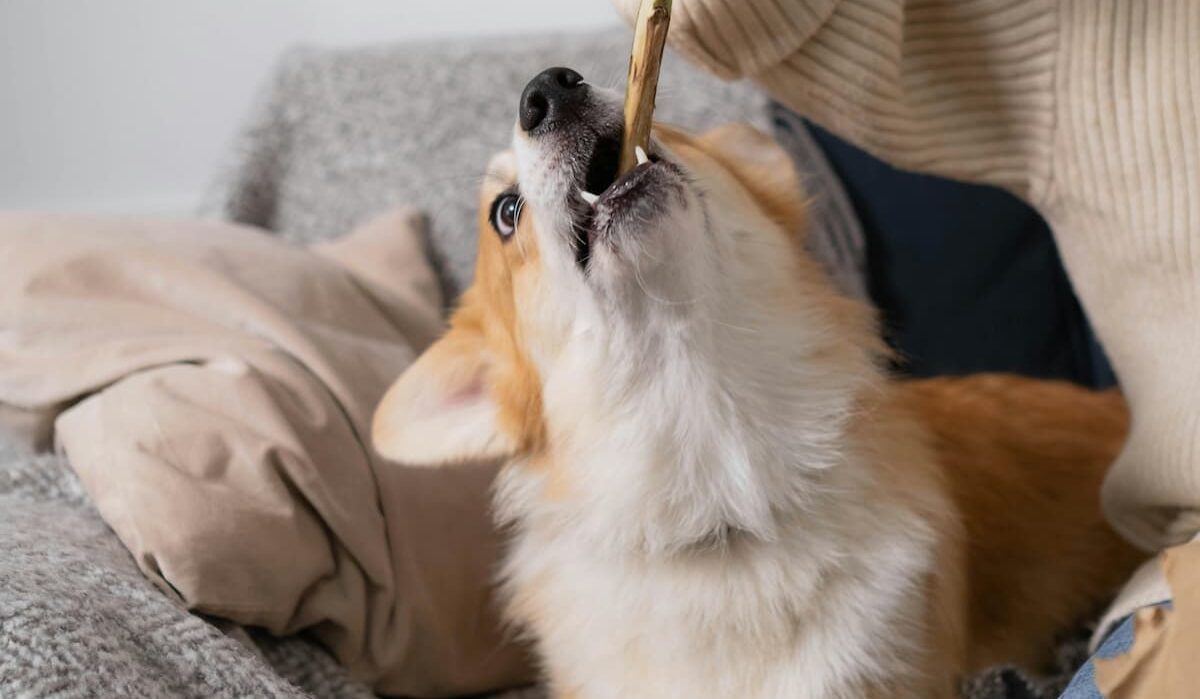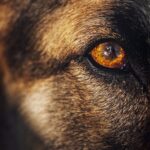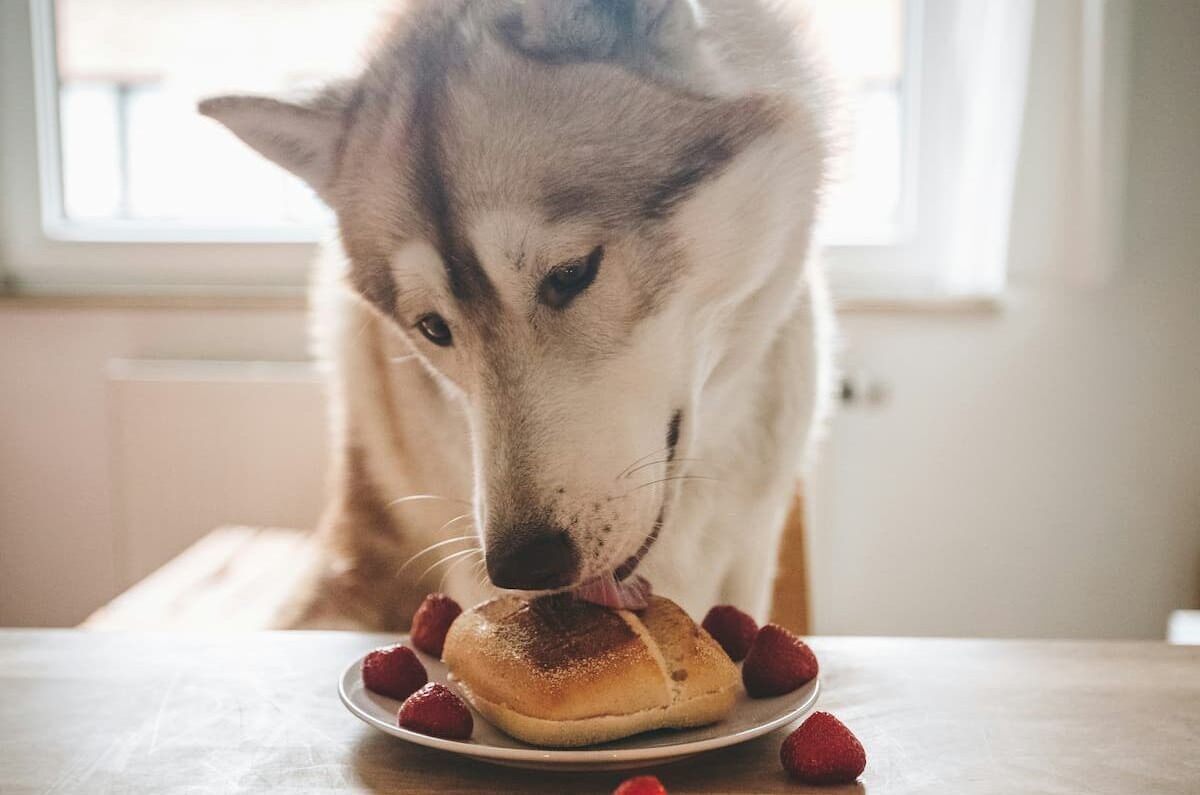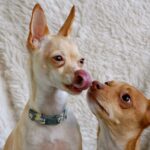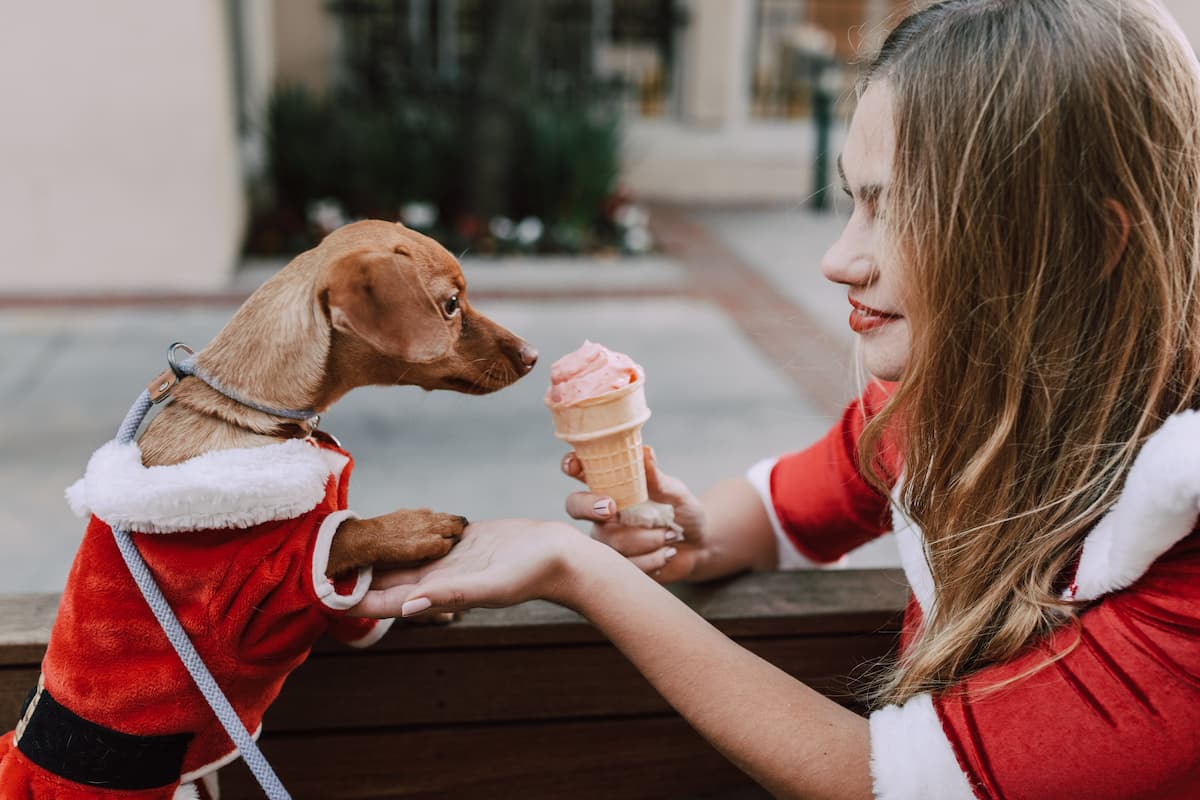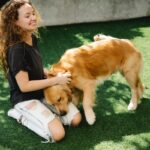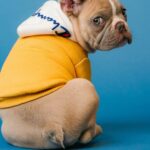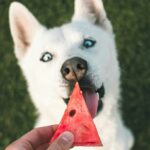Picture this: you’re strolling through the park on a beautiful sunny day, your loyal four-legged companion trotting happily beside you.
Suddenly, like an unstoppable vacuum cleaner, your furry friend pounces on a random object lying innocently on the ground.
Is it a discarded donut?
Nope.
Maybe a misplaced meatball?
Not quite.
It’s just a plain, old stick.
Confused yet?
Don’t worry, you’re not alone.
This article will answer the question: Why do dogs eat everything they see?
Why Dogs Have The Urge to Eat Everything in Sight
So, why do dogs have this seemingly odd compulsion to devour the world around them?
Well, the answer lies in their evolutionary history and their inherent need to explore and scavenge for food.
1. Survival instinct: Dogs have always been scavengers by nature.
In the wild, their ancestors had to rely on their ability to locate and consume whatever food was available to survive.
This instinctual behavior is deeply embedded in their DNA, causing them to constantly search for food, even in an environment where their nutritional needs are adequately met.
So when your dog compulsively munches on grass, chew toys, or even non-edible objects, remember that it’s their way of ensuring they’re prepared for times of scarcity.
2. Curiosity and exploration: Dogs are naturally curious creatures, driven by their instinct to explore the world around them.
This instinctual behavior often leads them to put pretty much anything they find in their mouths.
It’s like their way of investigating their surroundings, tasting different textures, and gathering information through their sense of taste.
lthough this behavior can be frustrating for pet owners, it’s important to understand that dogs use their mouths as a primary tool for exploring their environment.
3. Behavioral issues: Some dogs develop a more intense drive to eat everything due to underlying behavioral issues.
For example, dogs suffering from anxiety or compulsive disorders may resort to excessive eating as a coping mechanism.
Such dogs may exhibit repetitive behaviors like pica, where they consistently eat non-food items.
If you suspect your dog’s indiscriminate eating habits may be related to behavioral issues, it’s essential to consult a veterinarian or a professional dog trainer to address the root cause and prevent any potential health risks.
4. Sense of smell and taste: Dogs possess an incredibly keen sense of smell, significantly more potent than ours.
This heightened olfactory sense can make them more drawn to enticing odors, even those emanating from inedible objects.
Additionally, the texture of certain objects may feel satisfying to them as they chew or tear them apart.
This can provide a sensory experience that satisfies their natural instinctual needs.
The Potential Health Risks for Our Furry Friends
One of the primary concerns when dogs eat things they shouldn’t is the risk of gastrointestinal obstruction.
Consuming foreign objects such as rocks, socks, or even small toys can lead to blockages in their digestive system.
These obstructions can cause severe discomfort, abdominal pain, vomiting, and diarrhea.
In some cases, emergency surgery may be required to remove the object and prevent further complications.
Another potential health risk for our furry companions is poisoning.
Dogs can inadvertently ingest toxic substances like household chemicals, pesticides, or certain plants.
These substances can be harmful and even deadly for them.
It’s crucial to be aware of the potential toxins in your home or surroundings and keep them out of your dog’s reach.
If you suspect that your dog has consumed something toxic, don’t hesitate to contact your veterinarian for immediate assistance.
Feeding Practices to Curb Your Dog’s Constant Hunger
So, what can we do to address this behavior and prevent any potential health risks?
- Establish a Feeding Routine:
-
- Set regular feeding times and stick to them, providing structured meal plans for your furry friend.
-
- Avoid free-feeding or leaving food out all day as this encourages overeating.
-
- Use proper measuring devices to ensure accurate portions and avoid excess calorie intake.
- Feed a Balanced Diet:
-
- Choose high-quality, nutritionally balanced dog food that meets your pup’s specific needs.
-
- Consult with your veterinarian to determine the appropriate serving size for your dog’s age, size, and activity level.
-
- Incorporate treats and rewards sparingly, and opt for healthier options like fruits or small training treats.
- Combat Boredom and Provide Mental Stimulation:
-
- Engage your dog in interactive playtime and offer puzzle toys or food-dispensing toys to keep them mentally stimulated.
-
- Provide regular exercise and physical activity to help curb their appetite and prevent excessive eating.
-
- Consider using slow-feed bowls to extend mealtime and prevent rapid consumption.
Remember, consistency and patience are key when it comes to addressing your dog’s constant hunger.
By implementing these feeding practices and understanding their natural instincts, you can help your furry companion maintain a healthy weight and overall well-being.
So, let’s put an end to their “eat everything” habit and promote a balanced and controlled eating routine!
Seeking Professional Help for Dogs with Pica
If your dog exhibits persistent pica behavior, it is advisable to consult a veterinarian or a certified dog behaviorist.
They can assess your dog’s overall health, behavior patterns, and create a tailored plan to address the underlying causes of pica.
Treatment options and management techniques:
-
- Behavioral modification: Professional trainers can guide you through positive reinforcement techniques to redirect your dog’s chewing behavior onto appropriate items.
-
- Medical intervention: In certain cases, medication may be prescribed to help reduce anxiety or compulsive behaviors contributing to pica.
-
- Environmental management: Creating a safe environment by removing access to objects that may be tempting for your dog to chew on can be an effective preventive measure.
Remember, seeking professional assistance for dogs with pica is crucial for their well-being.
By addressing the root causes and providing proper guidance, we can ensure our furry companions lead a happy and healthy life, free from the dangers of indiscriminate munching!
FAQ
Q: Why do dogs eat everything they see?
A: Dogs explore the world primarily through their sense of smell and taste, much like we humans rely on our vision.
This heightened sense of smell can often lead them on a scavenger hunt for tasty (and sometimes not so tasty) morsels they find around them.
Q: Is it just about hunger, then?
A: Not necessarily!
While hunger might play a role sometimes, it’s important to note that dogs may also chew due to boredom, stress, teething, or simply out of curiosity.
Dogs are naturally curious animals, and chewing provides them with mental and physical stimulation.
So, even if they’ve had a hearty meal, your furry buddy might still embark on a chewing spree.
Q: Are there specific items that dogs are more prone to chew on?
A: Absolutely!
Dogs have different preferences when it comes to chewing, but there are some common targets.
Items such as shoes, socks, furniture, and even remote controls become prime candidates for our four-legged friends’ chewing endeavors.
Similarly, outdoor objects like sticks, rocks, or grass can be hard to resist.
Q: Can chewing on inappropriate objects cause health issues for our dogs?
A: Unfortunately, yes.
Chewing on foreign objects can be hazardous to your pup’s health.
Swallowing small items may cause gastrointestinal blockages, leading to discomfort, vomiting, or even requiring surgical intervention.
Consequently, it’s crucial to keep a watchful eye on what your dog chews to protect them from potential harm.
Q: How can I prevent my dog from chewing on everything they lay their eyes on?
A: Firstly, ensure that your dog has access to plenty of appropriate chewing toys.
Providing them with suitable outlets for their chewing needs will help divert their attention away from your belongings.
Additionally, keeping potentially dangerous items out of their reach and providing mental stimulation through interactive play or puzzle toys can also help combat the urge to chew indiscriminately.
Q: Should I be concerned if my dog’s chewing habits suddenly change?
A: Yes, any sudden change in chewing behavior should be taken seriously.
If you notice that your dog is chewing more than usual, obsessively, or seems fixated on a particular item, it might be a sign of an underlying issue that requires immediate attention.
It’s best to consult with your veterinarian to rule out any medical problems or address possible behavioral concerns.
Q: Is there anything I can do to train my dog not to chew on everything?
A: Absolutely!
Consistency and patience are key when training your dog to avoid destructive chewing.
Rewarding them with praise and treats when they chew on appropriate items helps reinforce good behavior.
If your dog starts chewing on something they shouldn’t, redirect them to an appropriate toy and offer positive reinforcement when they engage with it.
In conclusion, dogs chew on everything they see due to a combination of factors like their natural instincts, curiosity, boredom, and even teething.
As responsible pet owners, it’s our duty to understand their needs, provide suitable alternatives, and keep a close eye on potential hazards.
By doing so, we can keep our furry friends happy, healthy, and away from our favorite pair of sneakers!
In Conclusion
First and foremost, it’s important to remember that dogs are natural scavengers.
In the wild, their ancestors had to rely on finding and consuming any food source available to survive.
While our modern-day pooches may have their bowls filled daily, that inherent scavenging instinct still lingers within them.
So, when they come across something that smells interesting or looks enticing, their instinct kicks in, driving them to investigate and often sample whatever catches their eye.
Another factor at play is boredom.
Dogs, like humans, can get bored easily, especially if they’re left alone for long periods or don’t receive adequate mental stimulation.
Eating things they shouldn’t is often a way for them to entertain themselves and alleviate their boredom.
It’s like their version of exploring a new hobby or finding something fun to do.
On top of that, dogs are incredibly curious creatures.
They’re constantly exploring the world with their noses and mouths, which is their primary way of interacting and learning about their environment.
So, if they come across something unfamiliar or intriguing, their curiosity takes over, and they’ll often give it a taste test.
Of course, let’s not forget that some dogs simply have a more voracious appetite than others.
Just like people have different tastes and desires, our furry friends can vary greatly in their inclination to consume whatever catches their eye.
One dog might be perfectly content with their kibble while another is on a mission to sample every possible object in their path.
While it may be frustrating to constantly retrieve half-eaten treasures from your dog’s mouth or deal with the aftermath of their culinary adventures, it’s important to remember that it’s all part of being a dog.
Their behavior is rooted in instincts and natural drives that have been with them for centuries.
So, the next time you find yourself asking, “Why do dogs eat everything they see?” just remember that it’s a combination of their scavenging nature, boredom, curiosity, and individual personality traits.
Perhaps a little extra training, providing plenty of mental stimulation, and keeping tempting objects out of reach can help satisfy their adventurous taste buds.


